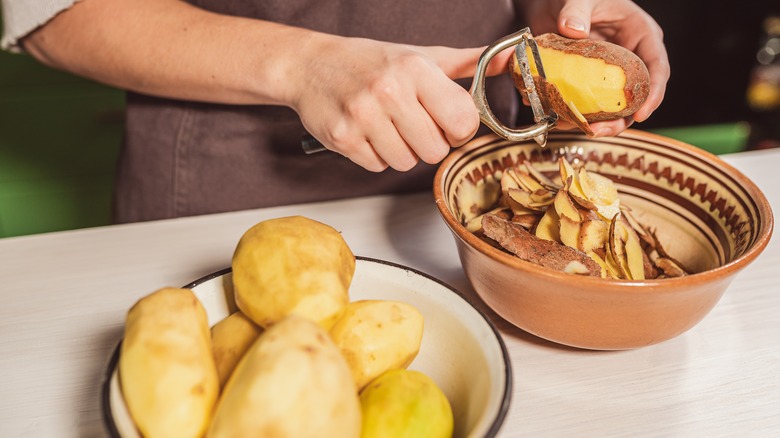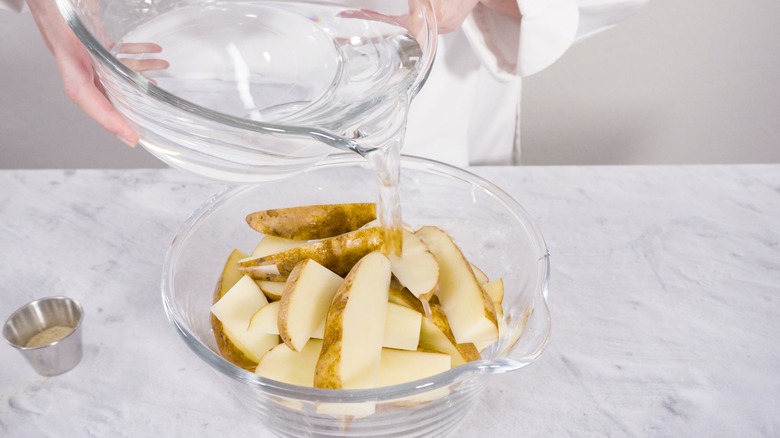Can You Still Eat Potatoes That Have Turned Gray?
Potatoes are the perfect starchy side dish vegetable, making dinner a no-brainer with their ease of whipping up. When prepping them for boiling or mashing with cream and butter, it's common to peel the skin off. But while you're peeling, do you ever notice the ones you started with turning a bit brown? This off-putting appearance could strike fear or frankly, just gross you out, but it's similar to when apples, pears, avocados, bananas, and even peaches turn a different color once cut. Oxygen exposed to these different types of produce brings out one thing they have in common: an enzyme called polyphenol oxidase (per Scientific American).
According to The Spruce Eats, when exposed to oxygen, this enzyme, also known as PPO, creates a chemical reaction that produces a brown or grayish hue on the surface of peeled potatoes or cut fruit. When produce has its peel, you don't notice this quite as much; that's because it acts as a barrier, blocking oxygen from seeping in. Reader's Digest states that this process is known as oxidation. So the big question is, can you safely consume potatoes that have this unsightly grayish hue to them?
Yes, it's perfectly safe
The good news is this reaction does not degrade the potatoes or compromise their quality, making them perfectly safe to eat. In fact, these Polish gray dumplings are a great dish to whip up if your tubers aren't the color of your liking. However, if you're cooking for others and are concerned about the presentation, there are some tricks to preventing oxidation from occurring. According to Taste of Home, when deactivating the enzymes, you need to expose them to something cold or acidic.
Start by covering your peeled potatoes by about 1 inch in very cold water — this will slow the oxidation process down tremendously; however, if you want to prolong the browning of your potatoes for, say, up to overnight, adding acid such as a squeeze of lemon juice or distilled white vinegar in with the cold water will do a double whammy of protecting those spuds from discoloring. A good rule of thumb to do the trick without changing the flavor is adding 1 teaspoon of acid for every 1/2 gallon of water used.
The Spruce Eats also states that when peeling potatoes, dropping the ones you've already peeled into cold water until you're finished with your batch can reduce oxidation. Another fun trick if you're ever shredding potatoes for hash browns or latkes is to mix in a bit of ascorbic acid — this will magically brighten them up again by altering the pH.

